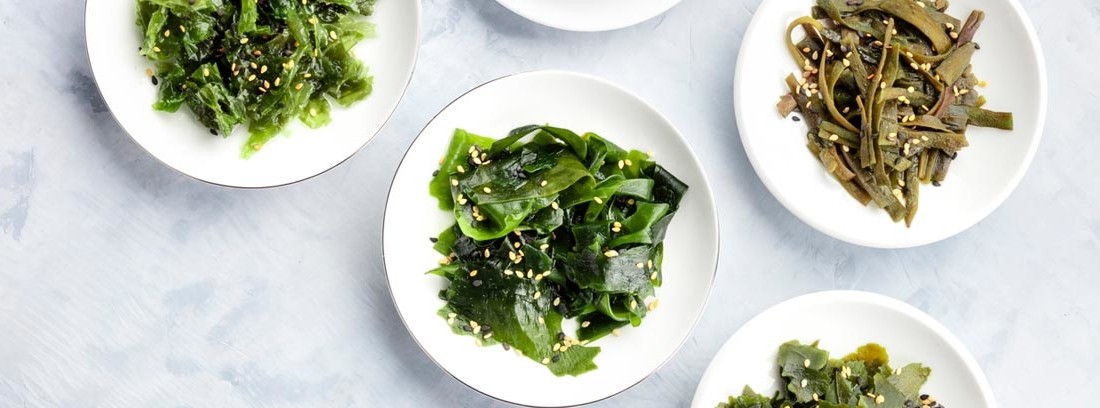3 Seaweed for cooking

Seaweed is a good culinary resource to increase the nutritional quality of our food; they are low in calories and rich in fiber, vitamins and minerals. Just use them in small quantity. We will see below three types of very versatile seaweed that can be added in many kinds of preparations and thus achieve an exotic touch in our dishes.
Kombu Seaweed
Kombu seaweed has a very characteristic flavor that is called umami, which means tasty and represents one of the 5 basic flavors along with the classics: sweet, salty, sour and bitter. It stands out for its content in alginic acid, water, fiber, protein and minerals.
We can use it like any other vegetable or even to enrich preparations. So we can elaborate soups or broths of great nutritional wealth or also salads, Pancakes or shakes green if it is in powder form (dehydrated). Also add a teaspoon of powdered seaweed as a natural flavoring or seasoning or spice. Is usually add to the cooking water of legumes and cereals wholemeal in order to facilitate the digestion of these foods. You can even prepare a seasoning called Shio-kombu, (usually used as a dressing) and is prepared with:
- A few pieces of kombu
- 3/4 of cup of spring water
- 1/3 cup of tamari.
- Let the seaweed soak for 10 minutes, then cook it with the same water and the tamari over medium heat for 45 minutes with a lid.
Nori Seaweed
Nori seaweed (Porphira) is known, above all, for being the seaweed that is used to make the famous Sushi. This type of algae always comes from crops; once collected fresh, it is dried in the sun or in the oven, spread in small quantities on bamboo mats (that is why it has a smooth side and a rough side). It stands out for its antioxidant value, in addition to containing large amount of iodine and minerals like calcium and potassium, among other properties.
It is usually sold in packages of 10 sheets and its color can vary from reddish to brown, dark green or black depending on its cooking or roasting state. We can also find it in flakes, ideal to add in soups, creams, purees, in salads or stews or make balls of rice, desserts or as a condiment table.
Alga Agar-Agar
Is a polysaccharide that comes from some red algae. In Japan they call it Kant (cold sky) but the name comes from the Malays who baptized it as agar (gelatin) since it has properties thickeners, stabilizers and gelling agents. Like all algae, it is very nutritious, has a high percentage of iodine and trace elements. Although it is not one of those that stands out the most in this regard, it is widely used to combat constipation due to its high content of fiber.
It can be found in powder, flakes and strips, separated or forming a compact block.In the kitchen it is very popular in haute cuisine because does not give color, smell, or taste to food and for its property of gel ten times faster than gelatin of animal origin, and with less quantity, since it absorbs up to 300 times its weight.
- From a nutritional point of view, algae are low in calories, have a high concentration of proteins, dietary fiber, minerals and vitamins.
- Some of the best known are: kombu, wakame and nori.
Alessandra huerta Nutritionist and Naturopath
(Updated at Apr 14 / 2024)